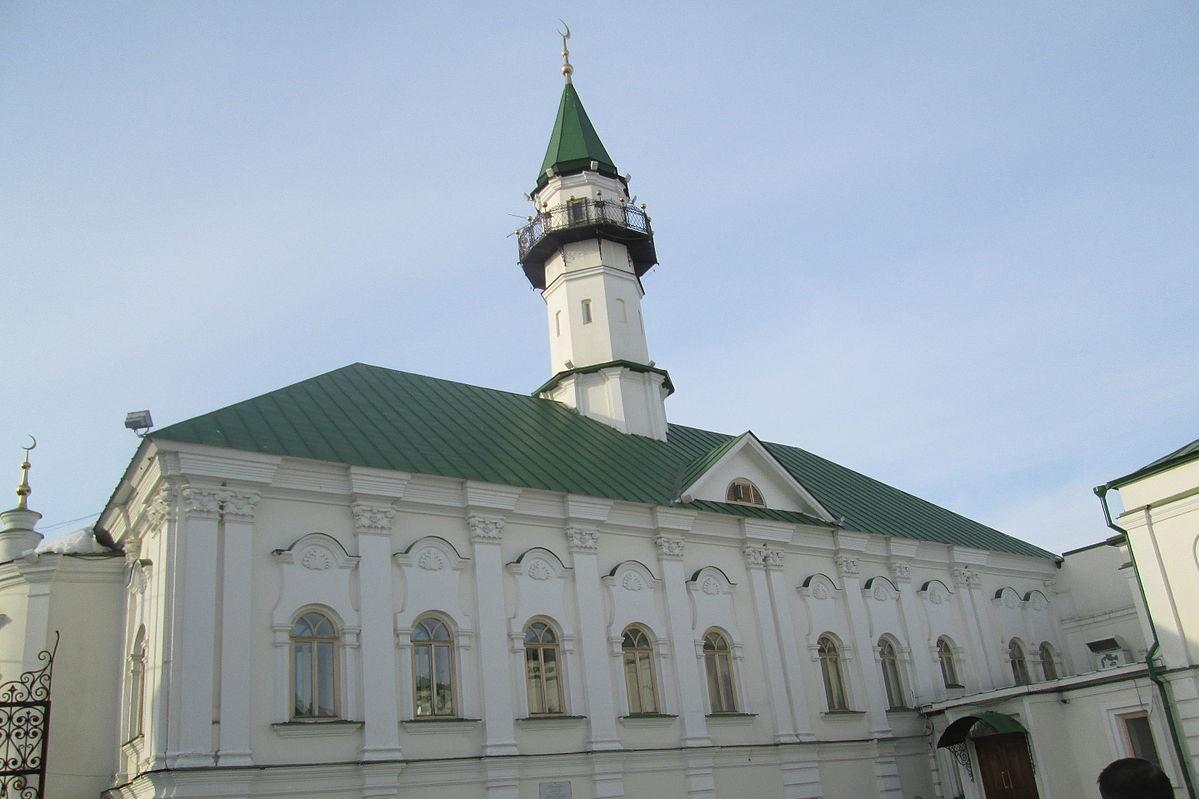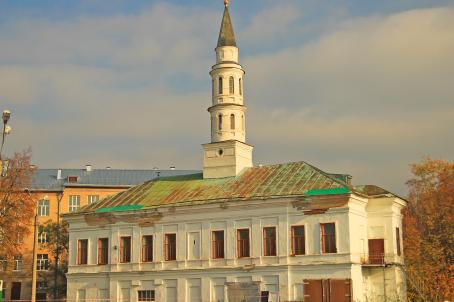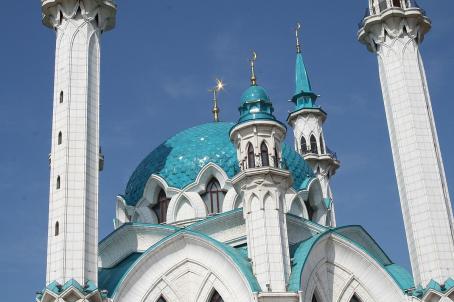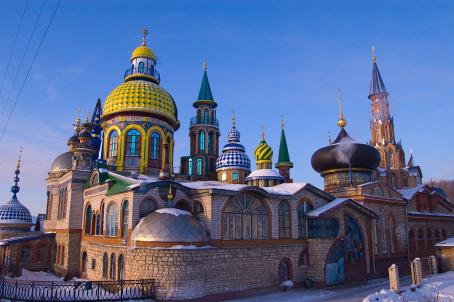Märcani Mosque

The Märcani Mosque, one of the largest mosques in Russia, was one of the symbols of the tolerance granted by Empress Catherine II (1762 - 1996) to non-Christian Russian communities at the end of the 18th century. This mosque remains the historical centre of Tatar-Muslim spirituality. The mosque was built in 1766-1770 and is the first stone mosque built in Kazan after it was taken by Ivan Terrible in 1552. The building was constructed in the tradition of medieval Tatar architecture with a minaret on the roof and forms in the provincial baroque style. In the decoration of the facades and interiors, the architectural decoration of the Petrine Baroque is combined with the decorative motifs of Tatar decorative art.





